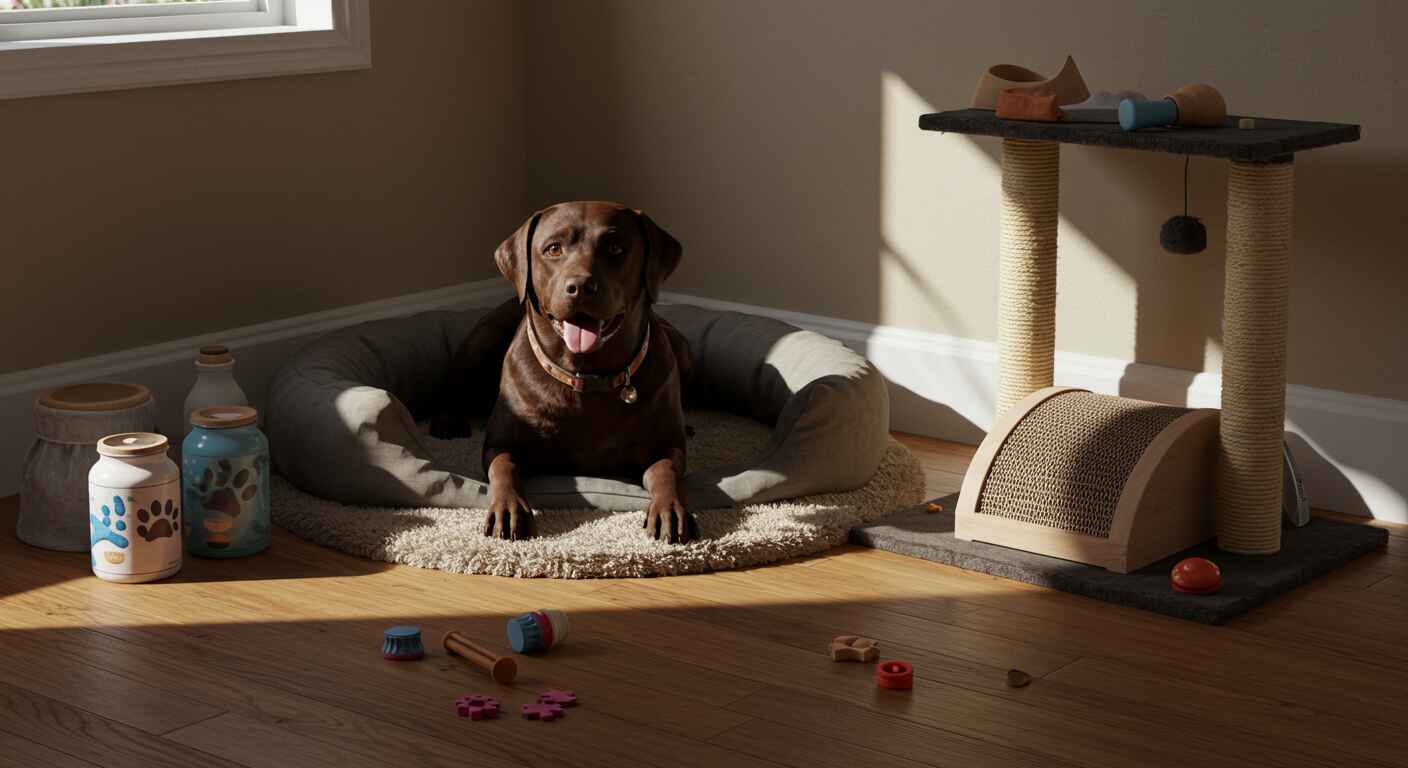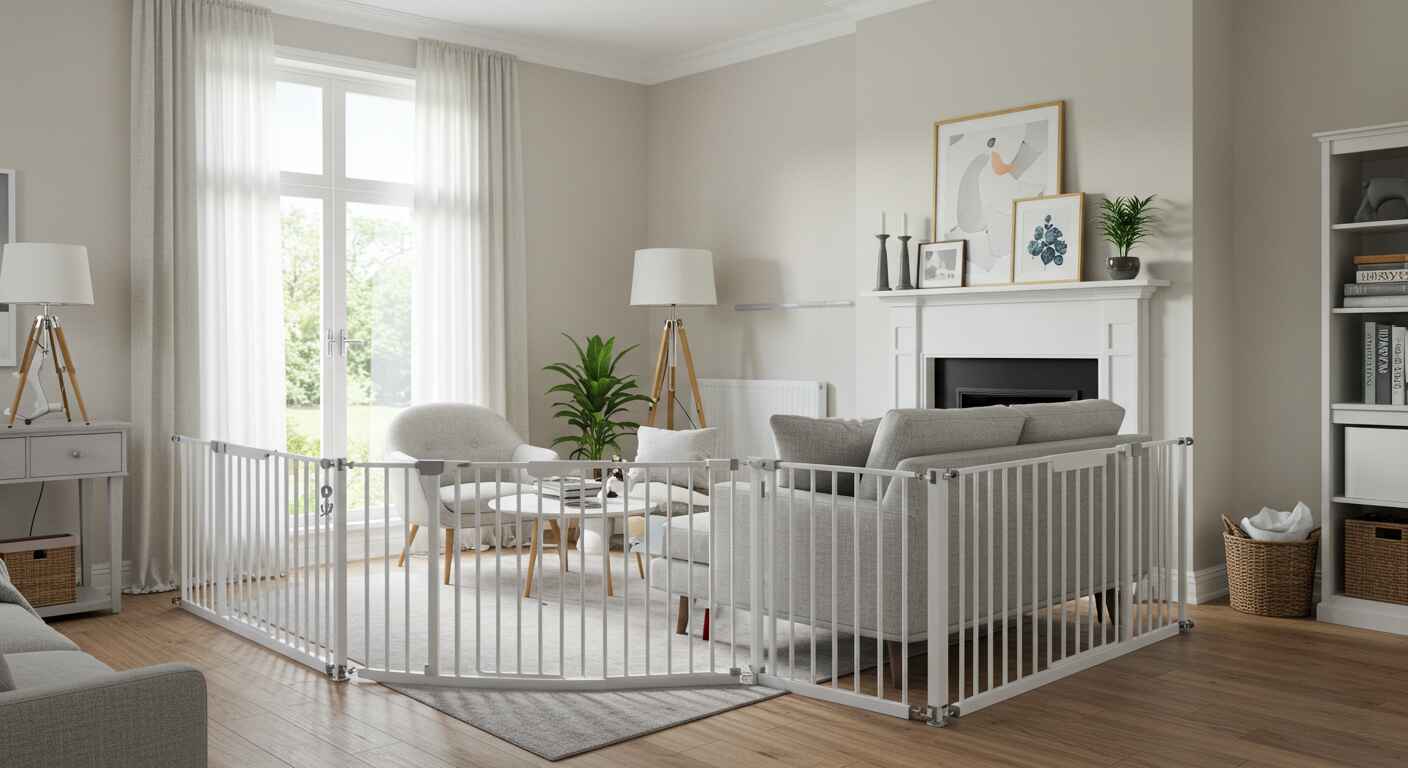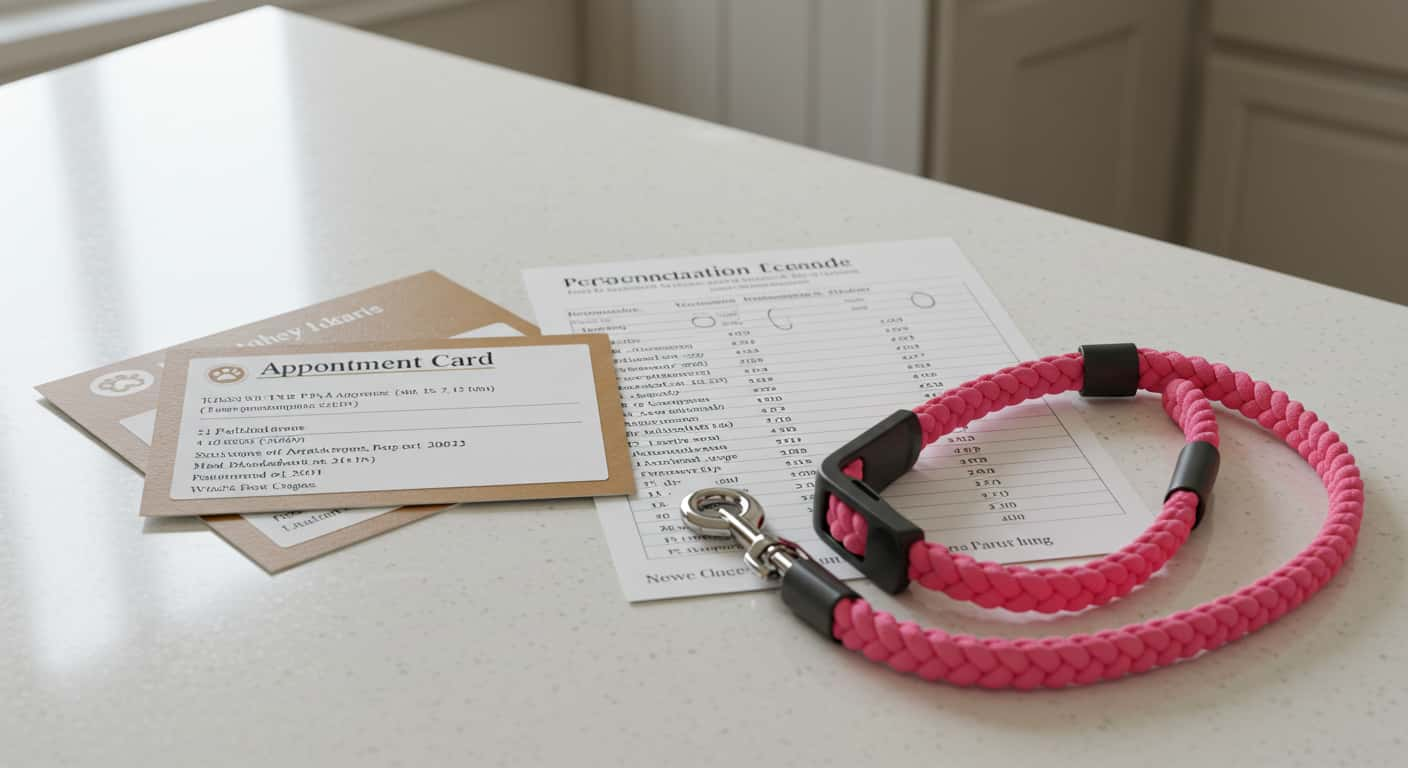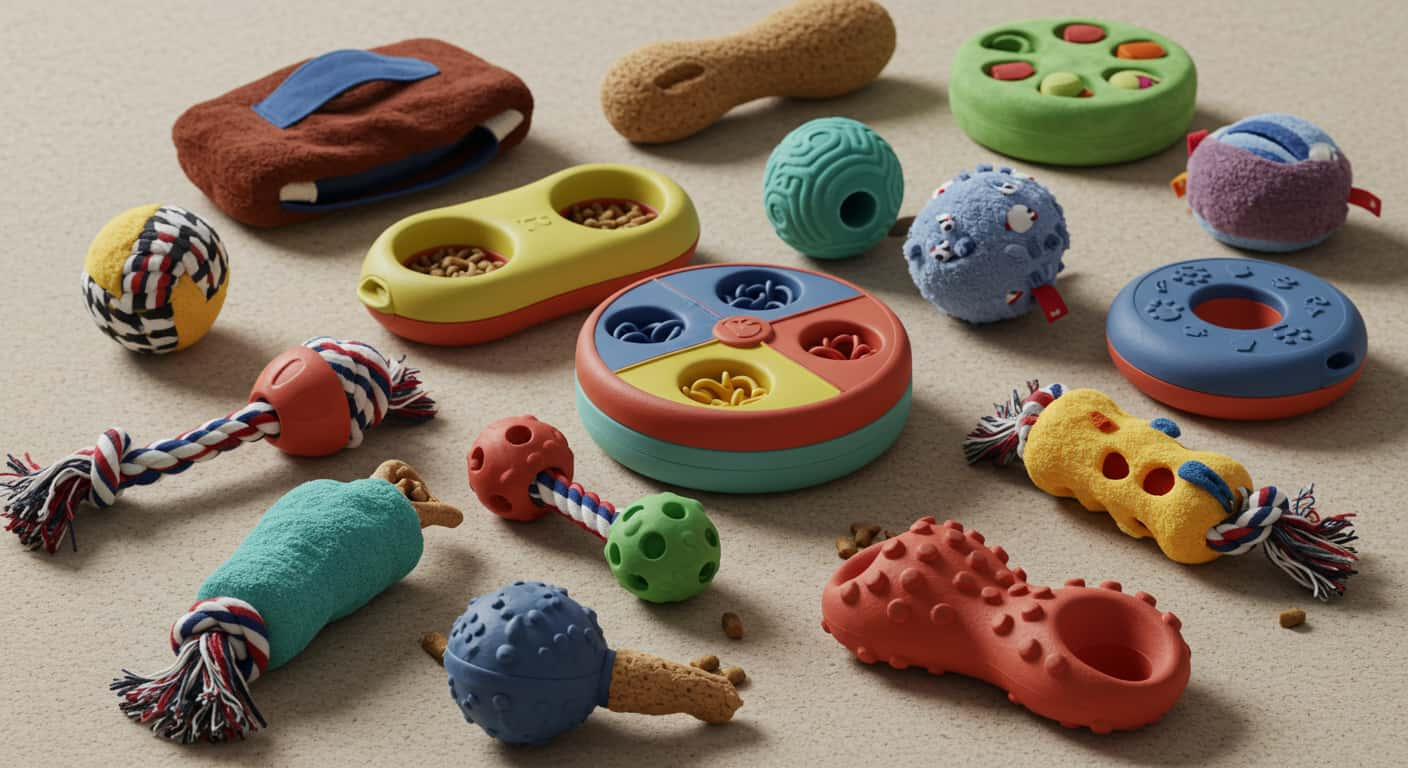How to Prepare Your Home for a New Pet the Right Way
How to prepare your home for a new pet isn’t just about tossing a bed in the corner or grabbing a few toys, it’s about transforming your space into a haven of safety, comfort, and calm. Whether you’re adopting a bouncy puppy, a curious kitten, or a small furry friend like a rabbit or guinea pig, the steps you take before they arrive will shape their experience, and yours.
When I first brought home Luna, my sweet but sneaky tabby, I thought I had everything covered. Within 24 hours, she had climbed the shelves, chewed two toxic plant leaves, and earned us an emergency vet bill. That day, I learned that excitement without preparation is a recipe for disaster.
If you’re wondering how to prepare your home for a new pet, this guide is your all-in-one checklist. From securing dangerous items to creating safe pet zones, stocking supplies, and involving the whole family, we’ll cover the practical and emotional side of welcoming a new companion.
Table of Content
Pet-Proofing Your Home for Safety
Prepare Your Home for a New Pet by Securing Dangerous Items

One of the most overlooked parts of how to prepare your home for a new pet is pet-proofing. Pets are naturally curious, and they often find danger faster than we expect. So before your pet arrives, take these precautions seriously.
Here’s what to do:
- Lock up toxic items: Cleaning products, prescriptions, and any sharp tools should be in cabinets or locked containers.
- Secure the trash: Use bins with locking lids or place trash inside cabinets with childproof latches.
- Cover all electrical cords: Use cord protectors, tubing, or run wires behind furniture.
- Remove harmful plants: Common indoor plants like lilies, aloe vera, and pothos are highly toxic to cats and dogs.
- Clear out choking hazards: Small objects like buttons, coins, batteries, and jewelry should be picked up and kept away.
If you’re serious about how to prepare your home for a new pet, walk through every room at their eye level. Luna once found her way into a drawer that I thought was unreachable. Assume your pet is more agile and clever than you think.
Another vital part of how to prepare your home for a new pet is setting boundaries. While your pet should feel welcome, not every part of the house should be accessible—especially at first.
Here’s how to make it work:
- Use baby gates to block off rooms like the office or laundry area.
- Close doors when necessary, especially if a room has hazards you can’t move.
- Set up temporary pens or play areas in common rooms where you can supervise.
In our home, the office is a no-pet zone after Peanut the guinea pig chewed through a power cable during an unsupervised wander. Now, his play area is secure and supervised at all times.
If you’re still wondering how to prepare your home for a new pet in a busy household, start with safety. Once your space is secure, the rest will fall into place.
Creating a Comfortable Environment
Setting Up a Safe and Quiet Pet Zone
Once you’ve tackled the safety hazards, the next major step in how to prepare your home for a new pet is giving them a designated, calm space of their own. Whether your new companion is energetic or shy, every pet needs a retreat, somewhere they can relax, sleep, and feel secure.
Here’s how to create that space:
- Choose a low-traffic area: Avoid busy hallways or loud rooms. Ideal spots include quiet corners, spare rooms, or laundry areas with proper ventilation.
- Set up appropriate bedding: Use species-specific beds, soft pads for cats and dogs, cozy tunnels or hides for small pets like rabbits or guinea pigs.
- Place food and water nearby: Keep bowls in reach but separate from litter boxes or bedding areas to maintain hygiene.
- Use crates or pens for security: For dogs, crate training can create a sense of safety and structure. Make it cozy with blankets and safe chew toys.
When we brought Max, our pup, home, we placed his crate in the corner of the living room where he could see us but not be overwhelmed. Within days, it became his sanctuary.
If you’re asking yourself how to prepare your home for a new pet that’s anxious or shy, start here. A quiet space builds comfort, trust, and routine.
Must-Have Supplies for Dogs, Cats, and Small Animals

To fully succeed at how to prepare your home for a new pet, stock up on the essentials before the big arrival. Having the right supplies on hand reduces stress for both you and your new companion.
Here’s a breakdown of must-haves by pet type:
| Type of Pet | Supplies |
|---|---|
| Dogs | Food & water bowls, leash, collar with ID, crate, chew toys, grooming tools, training treats, poop bags, dog bed, enzymatic cleaner |
| Cats | Litter box, litter, scratching post, food & dishes, interactive toys, cat bed, grooming tools, carrier, window perch |
| Small Pets (rabbits, guinea pigs, hamsters) | Habitat or cage, safe bedding, species-specific food, water bottle, hiding spots, chew toys, exercise wheels, grooming brush |
Pro tip: Buy a few familiar-scented items (like bedding from a rescue) to help ease the transition.
Also, keep in mind that how to prepare your home for a new pet isn’t just about the essentials, it’s about making that first week as smooth and comforting as possible.
Involving Your Family in Pet Preparation
Establishing Household Pet Rules and Routines
One often-overlooked part of how to prepare your home for a new pet is making sure everyone in your household is on the same page. Whether you live alone, with roommates, or have a big family, consistency is crucial for your new pet’s success.
Here’s how to build a solid foundation:
- Create house rules before the pet arrives: Decide whether pets are allowed on the couch, which rooms are off-limits, and where food bowls or litter boxes will go.
- Develop a schedule: Establish a routine for feeding, potty breaks, walks, and playtime. Pets, especially dogs and cats, thrive on predictability.
- Assign responsibilities: Make a care chart for who will feed, walk, or clean up after the pet each day. This helps avoid confusion and ensures everyone is involved.
In our home, we built a “Pet Duty Calendar” on the fridge. My niece knows she’s on treat duty. My brother takes the evening walk. It keeps things running smoothly and ensures Max gets the care and attention he needs.
If you’re unsure how to prepare your home for a new pet in a large household, start by preparing your people. A structured environment leads to a calmer pet.
How to Teach Children to Interact with a New Pet
Children and pets can form magical bonds, but only if both sides know how to interact safely. Teaching kids early is a major step in how to prepare your home for a new pet if you have little ones around.
Here’s how to help kids become responsible and respectful pet companions:
- Teach gentle handling: Show them how to pet softly, avoid sudden movements, and respect boundaries.
- Explain pet body language: Help them recognize signs of stress or overstimulation in dogs, cats, and small animals.
- Practice safe play: Avoid roughhousing or chasing, and guide kids toward games that match the pet’s personality and species.
- Include them in care: Age-appropriate tasks, like helping with feeding or brushing, can instill responsibility.
At family gatherings, we always reviewed the “Pet Interaction Rules” with visiting kids. No loud shouting near the guinea pig habitat. No picking up Luna the cat unless she climbs onto your lap. These small steps help prevent accidents and build trust between children and pets.
If you’re navigating how to prepare your home for a new pet and young children, remember: clear boundaries and calm guidance work wonders.
Health and Wellness Setup
Finding and Scheduling with a Trusted Veterinarian
If you’re serious about how to prepare your home for a new pet, one of the first things to check off your list is selecting a reliable veterinarian. Your pet’s health starts with professional care, even before they walk through your door.
Here’s how to plan:
- Choose a local vet early: Look for one with experience treating your specific type of pet, dog, cat, rabbit, or exotic.
- Schedule a check-up: Book a visit within the first week to ensure your pet is healthy and up to date on vaccinations.
- Ask about preventive care: This includes flea and tick prevention, heartworm meds (for dogs), deworming, and wellness exams.
- Inquire about microchipping: A tiny chip offers lifelong identification if your pet ever gets lost.
- Understand the spay/neuter schedule: Some rescues may handle this before adoption, but if not, your vet will guide the timeline.
When Max joined our home, I had already spoken with the vet and had his records transferred in. That early prep saved time, reduced stress, and helped me feel more confident in my decisions.
Outdoor Prep: Pet-Proofing Your Yard

If your pet will spend any time outside, this part of how to prepare your home for a new pet is non-negotiable. A yard can be a haven, or a hazard.
Key safety steps:
- Inspect fencing: Ensure there are no loose boards, gaps, or escape holes. Even small pets can squeeze through narrow openings.
- Remove toxic plants: Outdoor plants like oleander, sago palm, foxglove, and azaleas can be lethal if ingested.
- Secure water features: Fountains, ponds, and pools should be covered or blocked off to prevent accidents.
- Store tools and chemicals safely: Lawn treatments, sharp tools, and garden sprays should be locked in a shed or garage.
- Add shaded areas: Dogs especially need protection from the sun on hot days. Use umbrellas, awnings, or trees.
While Luna stays indoors, Max loves the backyard, but only after I cleared the area of all potentially dangerous plants and fixed a loose board behind the shed. It’s these small adjustments that make a big impact when figuring out how to prepare your home for a new pet.
Managing the First Days at Home
How to Ease the Transition for Your New Pet
You’ve done the hard work of how to prepare your home for a new pet, but the real journey begins when your pet steps inside for the first time. The early days are key to bonding, building trust, and helping them feel secure.
Here’s how to make that transition smooth:
- Take time off if possible: The first 48-72 hours are critical. Being present helps you manage any unexpected behavior and sets routines.
- Keep the environment quiet: Avoid loud music, large gatherings, or sudden changes. A calm home eases anxiety.
- Let them explore at their pace: Don’t overwhelm them with attention or try to force play. Let your pet come to you.
- Limit visitors: Introduce extended family or friends only after your pet has settled into the basics of their new environment.
- Stick to a feeding and potty schedule: Routine builds trust, especially for rescues or animals from shelters.
When Peanut and Butter, the guinea pigs, came home, I dimmed the lights, placed their habitat near a quiet wall, and just sat beside them for a while. Within hours, they started nibbling hay and peeking out from hiding. That’s when I realized how powerful an stress-free start can be.
Bonding and Routine: Building Trust from Day One
Another often-missed step in how to prepare your home for a new pet is recognizing that emotional readiness is just as important as physical setup. Trust isn’t automatic, it’s earned, moment by moment.
Tips for building that bond:
- Use positive reinforcement: Praise, treats, and affection help your pet associate you and your home with safety and comfort.
- Talk to your pet often: Your voice becomes a source of comfort over time, even if they don’t understand every word.
- Establish a simple daily rhythm: Feeding, walks (for dogs), and playtime at consistent times help regulate emotions and reduce anxiety.
- Respect boundaries: Some pets need more time and space than others. Let them decide when they’re ready for attention or cuddles.
- Be patient with “accidents” or mistakes: Every misstep is an opportunity to teach and connect.
When Max first arrived, he barked at the refrigerator, hated his leash, and refused to sleep alone. But a consistent bedtime routine, some calming toys, and lots of gentle reassurance turned that chaos into calm in just a week.
So if you’re wondering how to prepare your home for a new pet emotionally, the answer is simple: time, patience, and presence.
Going Beyond the Basics
Creating an Enrichment Plan for Physical Exercise

When thinking about how to prepare your home for a new pet, most new pet owners focus on food, beds, and basic safety, but one of the most critical areas is planning for physical activity. Without exercise, pets can develop anxiety, destructive habits, or health problems. Just like us, they need movement to thrive.
Here’s how to support your pet’s physical needs:
- Dogs: Plan daily walks based on breed and energy level. Larger or working breeds may need multiple long walks per day. Include structured play like tug, fetch, or training drills.
- Cats: Vertical space like cat trees and window hammocks allow climbing and exploration. Laser toys and feather wands encourage movement.
- Small pets: Guinea pigs and rabbits need floor time in secured, supervised spaces. Add play tunnels, ramps, or hideouts for variety.
- Birds: Let birds out to stretch and flap wings in a bird-proofed room. Perches, swings, and foraging toys can help, too.
When planning how to prepare your home for a new pet, remember that mental and physical enrichment must be part of the routine from day one.
Mental Stimulation Tools for Smart, Happy Pets
A huge part of how to prepare your home for a new pet long term is supporting their brain. Bored pets get into trouble, chewing furniture, digging holes, barking excessively, or scratching at doors. Prevention is better than correction.
Here’s how to add daily mental stimulation:
- Puzzle feeders: These slow feeding down and engage problem-solving instincts. Ideal for dogs, cats, and even small animals.
- Training games: Trick training (like “sit,” “stay,” “spin,” or “target”) builds obedience while stimulating their mind.
- Toy rotation: Don’t put all toys out at once. Rotating toys every few days keeps things fresh and exciting.
- Scent games: Hide treats in different rooms or toys to engage your pet’s sense of smell.
- Interactive playtime: You are the most exciting “toy.” Playing together strengthens your bond and creates healthy engagement.
Luna, my tabby cat, goes wild for a cardboard box with small treat holes cut into it. Max loves a frozen peanut butter Kong during hot afternoons. It’s simple, inexpensive enrichment that makes a big impact.
If you’re still wondering how to prepare your home for a new pet beyond the first week, mental and physical routines are your answer. Boredom leads to misbehavior, engagement leads to trust and peace.
The Emotional Side of Pet Preparation
Understanding Emotional Shifts in Pet and Owner
While many guides focus only on logistics, the emotional component of how to prepare your home for a new pet is just as important. Bringing a new animal into your life can stir up excitement, nervousness, and sometimes even overwhelm, for both you and your pet.
Here’s what you can expect emotionally in those early weeks:
- Initial uncertainty: Pets may seem withdrawn, overexcited, or scared as they adjust. Don’t take this personally, it’s normal.
- Owner anxiety: Many new pet parents worry if they’re doing enough, or doing it right. You’re not alone in that feeling.
- Family transitions: Kids may get overly excited or scared, and even existing pets might feel jealous or territorial.
- Emotional bonding: Bonding may take time, especially with rescues. Don’t expect instant affection.
The emotional side of how to prepare your home for a new pet means being ready to give grace, to your animal, your family, and yourself. Progress isn’t always linear, but it will come with consistency and love.
If your pet seems hesitant or afraid, offer comfort by sitting nearby, speaking gently, and giving them the time they need to explore and approach at their pace.
Practicing Patience and Building Bonds
One of the golden rules of how to prepare your home for a new pet is this: patience isn’t optional, it’s essential. Unlike humans, animals won’t understand your excitement or your intentions immediately. They’ll need to feel safe first.
Here’s how to encourage emotional connection:
- Be predictable: Routines reduce anxiety. Feed, walk, and play at the same times daily.
- Use your voice and presence: Spend time in the same room, even if you’re not interacting directly.
- Avoid scolding or punishment: Redirect with kindness, not fear.
- Celebrate small wins: First tail wags, eye contact, or lap cuddles are all steps forward.
Charlie, our family’s adopted parrot, took six weeks to trust us. Every day, we sat near his cage, offering treats and speaking gently. Now, he whistles his name every morning when we enter the room.
So if you’re still learning how to prepare your home for a new pet, remember, it’s not just about safety or toys. It’s about patience, empathy, and emotional safety too.
Final Preparations Before the Big Day
Last-Minute Safety and Supply Checks
The big day is almost here. You’ve planned, prepped, and educated your household. But even if you think you’ve completed everything, don’t skip this final walkthrough. It’s one of the most crucial last steps in how to prepare your home for a new pet.
Use this last-day checklist:
- Recheck pet-proofing: Are cords covered? Trash sealed? Toxic plants removed?
- Prep their space: Bedding laid out? Bowls filled? Toys and comfort items ready?
- Confirm supplies: Do you have food, treats, ID tags, cleaning products, and grooming tools?
- Review pet zone access: Doors and gates secure? Crate or habitat placed in a calm spot?
- Get your emergency contacts ready: Vet info, poison control number, and microchip registration (if applicable)
Even seasoned pet parents use this final sweep. In fact, a well-timed recheck saved Max from a surprise chocolate bar left in a backpack on the floor.
So if you’re finalizing how to prepare your home for a new pet, make sure your setup is clean, simple, and stress-free.
What to Do the Day Before Your Pet Arrives
The day before your pet comes home is a great time to mentally shift into “welcome mode.” This part of how to prepare your home for a new pet is more emotional than physical, but just as important.
Here’s what to do:
- Clear your calendar: If possible, take the next day off work or clear your schedule for quality bonding time.
- Limit visitors: This isn’t the day for guests or parties. Your pet needs calm.
- Create a calm welcome area: Put familiar-scented bedding, soft music, and a few starter toys in their safe zone.
- Double-check food and water: Fill bowls with fresh supplies, even if they won’t be used until the next day.
- Get your camera ready: Capture the moment! These first memories are special.
Most of all, prepare yourself emotionally. Whether you’re adopting a rescue or welcoming a brand-new puppy, this transition will impact both of you. Being fully present is one of the most overlooked yet powerful parts of how to prepare your home for a new pet.
FAQs About How to Prepare Your Home for a New Pet
How long should I take off work when bringing home a new pet?
Ideally, try to take at least 3-5 days off when bringing home a new pet, especially a puppy or kitten. This gives you time to establish routines, begin house training, and help your pet adjust to their new environment. When I brought Max home, I took a full week off, which made a tremendous difference in his adjustment period and our bonding.
What are the most commonly overlooked hazards when preparing your home for a new pet?
The most commonly overlooked hazards include:
Houseplants (many are toxic to pets)
Small objects that can be choking hazards
Cords and wires
Certain foods left on counters (like chocolate, grapes, or onions for dogs)
Gaps in fencing or under furniture where small pets can get stuck
I learned about the plant hazard the hard way with Luna, but tha
How should I introduce my new pet to existing pets in the home?
When preparing your home for a new pet that will join existing pets:
Create separate spaces initially
Exchange scents before physical introductions (swap bedding or toys)
Conduct first meetings in neutral territory when possible
Keep initial interactions brief and positive
Supervise all interactions until you’re confident they’re getting along
With Peanut and Butter, I kept them in sepa
What’s the minimum amount of supplies I need before bringing my new pet home?
At minimum, prepare your home for a new pet with:
Appropriate food and water containers
A comfortable bed/sleeping area
Waste management supplies (litter box for cats, pee pads for puppies, etc.)
Secure containment (crate, carrier, habitat)
Basic toys
ID tag with your contact information
Appropriate grooming tools
Everything else can be purchased as you learn your pet’s preferences.
How do I pet-proof a rental property without making permanent changes?
To prepare a rental home for a new pet:
Use free-standing baby gates instead of installed ones
Place cord covers that don’t require wall mounting
Use furniture covers to protect from hair and scratches
Place plastic mats under food and water bowls
Use double-sided tape on furniture as a temporary deterrent for cats
Place pet-safe houseplants in hanging baskets out of reach
When I moved into an apartment with Max, removable pet gates were lifesavers for keeping him contained without damaging the property.
Confidently Welcome Your New Best Friend
Now that you know how to prepare your home for a new pet, you’re ready to open your door, and your heart, to a new family member. Whether it’s a curious kitten, a playful pup, or a cuddly guinea pig, your efforts will lay the foundation for a healthy, happy relationship.
From pet-proofing and supply shopping to creating cozy spaces, involving the family, and preparing emotionally, you’ve taken the right steps. The process of how to prepare your home for a new pet isn’t about perfection, it’s about being intentional, safe, and compassionate.
And remember, the journey doesn’t end at adoption day. As your pet grows and your routines evolve, revisit these tips. The love, trust, and routines you build now will impact your pet’s well-being for years to come.
Looking for inspiration? Try How to Crate Train a Puppy Without Tears and 10 Pet Care Tips Every Beginner Should Know.


